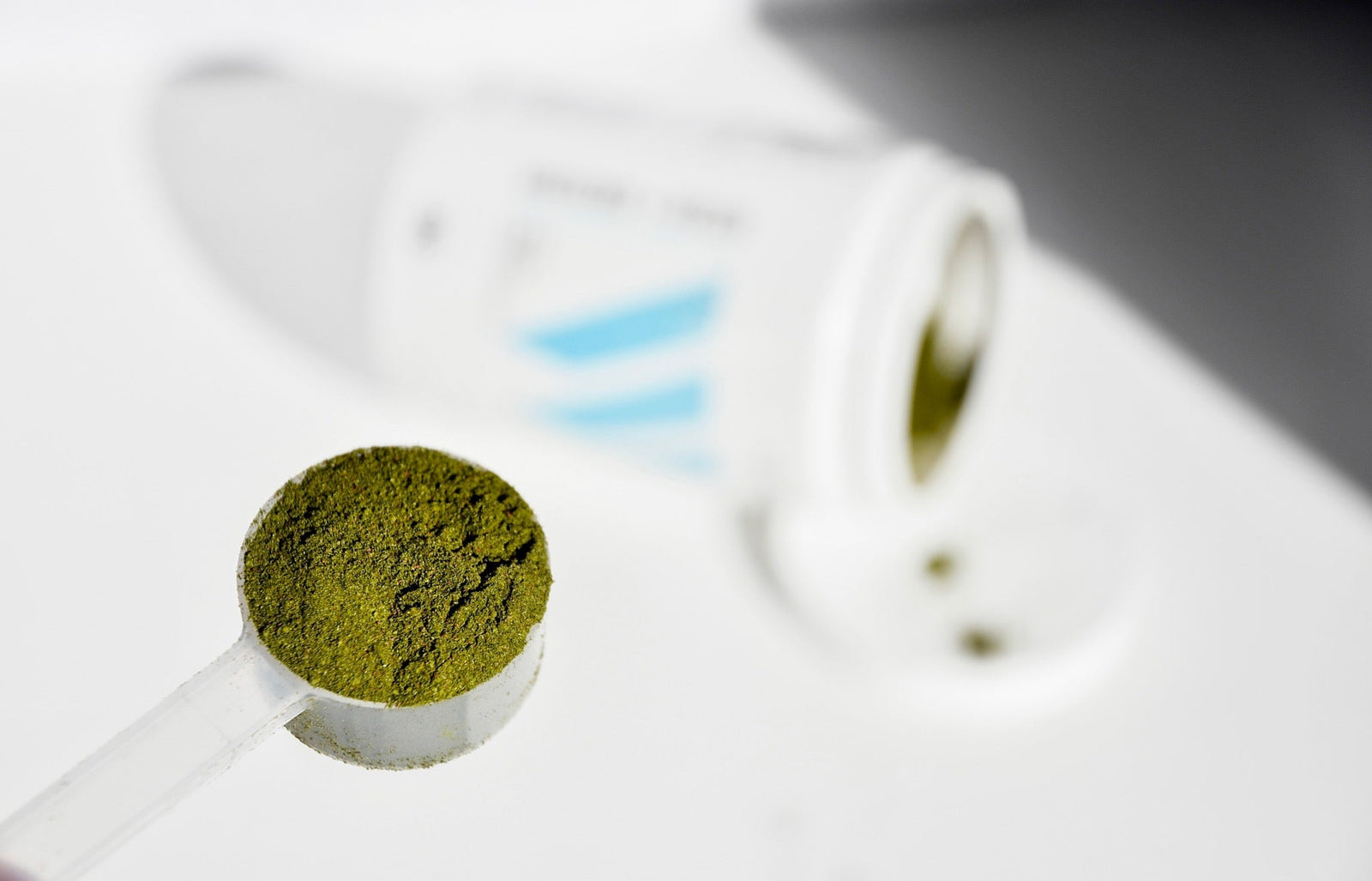Are Greens Powders Worth It? The Science, Dosing, and What to Look For
Greens powders are marketed as the ultimate solution to nutrient gaps, digestive issues, and low energy levels. But the real question is—are greens powders worth it? The short answer: it depends. The longer answer? It depends on dosing, ingredient transparency, and your expectations for what greens powders are designed to do.
Let’s dig into the science, comparisons, and what makes a greens supplement actually worth buying.
What Are Greens Powders?
Greens powders are dietary supplements typically made from a concentrated blend of fruits, vegetables, grasses, algae, and other plant-based superfoods. Common ingredients include:
-
Spirulina
-
Chlorella
-
Barley grass
-
Wheatgrass
-
Kale
-
Spinach
-
Broccoli
-
Beetroot
-
Pomegranate
-
Turmeric
These powders are dehydrated, powdered, or juiced, then packaged into blends that claim to support overall health, digestion, immunity, and energy. They're often promoted as a solution for individuals who don’t eat enough fruits and vegetables.
According to a 2021 study by Desbrow in Nutrients, greens powders may improve antioxidant status and support blood pressure regulation, but the efficacy depends heavily on formulation and dosage.
Greens Powder Benefits And How Greens Work
Greens powders work by delivering concentrated nutrients from whole food sources—such as vegetables, fruits, grasses, algae, and herbs—in a powdered, easily digestible form. These nutrients are intended to fill dietary gaps, support energy production, promote detoxification, and boost antioxidant capacity in the body.
Here’s how greens powders function once consumed:
1. Micronutrient Support
Many people don’t meet their daily recommended intake of key vitamins and minerals. Greens powders are packed with micronutrients like vitamin K, folate, magnesium, iron, and vitamin C—which support:
-
Cellular energy production
-
Immune health
-
Cognitive function
-
Red blood cell formation
-
Bone and cardiovascular health
When these nutrients are derived from real food sources (rather than synthetics), they also come with cofactors and phytonutrients that enhance absorption and effectiveness.
According to Owen and Johns in International Journal of Food Sciences and Nutrition, natural food matrices improve nutrient bioavailability compared to isolated synthetics.
2. Alkalizing Effects and pH Balance
Some greens powders include ingredients like chlorella, spirulina, wheatgrass, and alfalfa, which are known for their alkalizing effects. Although your body tightly regulates pH levels, these ingredients may help:
-
Support kidney function
-
Reduce acid load from a high-protein diet
-
Buffer lactic acid during intense training
While the body’s pH isn’t drastically changed by diet alone, research in Nutrients shows that high fruit and vegetable intake can help maintain systemic balance in active populations (Tucker et al., Nutrients, 2012).
3. Antioxidant Activity and Inflammation Reduction
One of the main benefits of greens powders is their high ORAC value (oxygen radical absorbance capacity). Ingredients like green tea extract, turmeric, blueberry, and pomegranate deliver polyphenols, flavonoids, and carotenoids, which neutralize free radicals and reduce oxidative stress.
This has direct implications for:
-
Recovery and reduced delayed-onset muscle soreness (DOMS)
-
Long-term disease prevention
-
Healthy aging
A 2018 study by Rodriguez-Casado in Oxidative Medicine and Cellular Longevity confirmed that polyphenol-rich foods support cellular protection and inflammatory balance.
4. Gut Health and Digestion
Many greens powders contain digestive enzymes and probiotics to support microbiome diversity, nutrient breakdown, and smoother digestion. In some formulas, prebiotic fibers like inulin or acacia gum are also included to feed healthy gut bacteria.
This combination helps:
-
Enhance nutrient absorption
-
Support immune function via the gut-brain axis
-
Reduce bloating and GI discomfort
Slavin in Nutrition Research Reviews outlines how dietary fiber and fermented plant compounds improve intestinal function and overall metabolic health.
5. Convenience and Consistency
Greens powders make it easier to consistently get your daily dose of plant-based nutrition—especially for people with:
-
Busy schedules
-
Limited access to fresh produce
-
Selective eating habits
-
High training loads
While they’re not a replacement for a nutrient-dense diet, they offer a nutritional insurance policy that helps keep your body functioning optimally.
Are Most Greens Powders Underdosed?
Yes, and that’s a big problem. Most greens powders are underdosed, meaning the quantity of individual ingredients per serving is too low to provide real benefits. While labels may list impressive superfoods, they often lack clinical doses necessary to produce a health or performance effect.
Why Dosing Matters
It’s not just about what’s listed on the label—it’s about how much of it you’re getting. The therapeutic or functional dose of spirulina, for example, ranges from 2–8 grams per day depending on the intended benefit, according to Gershwin in the Journal of Medicinal Food. If your greens powder only contains 500 mg of spirulina hidden in a proprietary blend, it’s unlikely to do much.
Why Proprietary Blends Are a Red Flag
A proprietary blend is a combination of ingredients listed without individual dosages. That means you don’t know how much of each ingredient you’re getting, making it impossible to verify efficacy.
Transparency in labeling is crucial. Without it, you’re buying a product based on marketing claims, not measurable outcomes. As noted by Dr. Pieter Cohen in JAMA, supplements with proprietary blends often obscure dosing and increase the risk of underperformance or adulteration.
Real-World Comparison: Swolverine Greens+Reds vs. AG1 (Athletic Greens)
To determine if greens powders are worth it, we need to compare leading brands based on serving size, ingredient transparency, and use of synthetic additives.
| Brand | Greens Per Serving | Proprietary Blend | Synthetic Vitamins |
|---|---|---|---|
| Swolverine Greens+Reds | 15.2g | No | No |
| AG1 (Athletic Greens) | 12g (including additives) | Yes | Yes |
Swolverine’s Greens+Reds delivers 15.2g of greens per serving, fully transparent labeling, and no synthetic vitamins. AG1, on the other hand, provides only about 10g of greens—the rest of its 12g serving includes synthetic vitamins, digestive enzymes, and probiotics.
Why AG1 Looks “Better” on Paper
AG1 provides 100% or more of daily vitamin values, but that’s due to added synthetic nutrients—not naturally derived ones. According to a 2020 review by Aune in Critical Reviews in Food Science and Nutrition, the dehydration and drying process used in greens powders significantly reduces natural vitamin content, which is why many companies add synthetics post-processing.
That doesn’t make AG1 a bad product—but it does mean you’re paying for a multivitamin with some greens, not a whole food–based greens powder.
What to Look for in a Greens Powder
If you’re still wondering “Are greens powders worth it?”, use this checklist before making a purchase:
1. Open-Label Transparency
Choose supplements with fully disclosed ingredient amounts. Avoid proprietary blends.
2. Clinically Effective Doses
Look for at least 12–15 grams per serving and clinically backed doses of core ingredients like spirulina (2–8g), chlorella (2–5g), and wheatgrass (3–6g).
3. Ingredient Diversity
A wide variety of land and sea greens, antioxidant-rich reds, and adaptogens will provide more comprehensive nutritional coverage.
4. No Reliance on Synthetic Additives
Synthetic vitamins aren’t inherently harmful, but they don’t offer the same antioxidant or phytonutrient profile as whole foods. Choose formulas that prioritize nutrient-dense, natural ingredients.
Final Thoughts: Are Greens Powders Worth It?
When formulated with transparency, clinically effective dosages, and a wide spectrum of whole food ingredients, greens powders can be a powerful tool to support your health, performance, and recovery. But not all products are created equal.
Many popular greens powders are underdosed, masked behind proprietary blends, or overloaded with synthetic additives that may look good on a label but offer little functional benefit. That’s why it’s critical to look beyond marketing and evaluate what’s actually in the scoop.
So—are greens powders worth it?
Yes—when you choose the right one.
Choose a product with:
-
Full label transparency
-
12–15g+ serving size per scoop
-
Diverse, organic ingredients from land and sea
-
No proprietary blends
-
No reliance on synthetic vitamins
Whether you're an athlete, a busy professional, or someone simply trying to feel and perform better, a well-crafted greens supplement can help bridge nutritional gaps, support your energy levels, and contribute to long-term wellness.
If you’re looking for a formula that checks every box, Swolverine’s Greens+Reds is backed by science, built with purpose, and made to fuel those who demand more from their supplements.
Because real performance comes from real ingredients—not hidden blends.
The Best Greens Powder Swolverine Greens+Reds: A Proven, Transparent Option
If you're looking for a clinically dosed, proprietary blend–free, and nutrient-diverse greens powder, Swolverine Greens+Reds offers:
-
15.2g of organic greens and reds per serving
-
Land and sea greens like Spirulina, Chlorella, Wheatgrass, and Barley Grass
-
Antioxidant-rich reds like Beetroot, Pomegranate, Turmeric, Blueberry, and Bilberry
-
No proprietary blends
-
No synthetic vitamins or fillers
Built for endurance athletes and active individuals, Swolverine products are designed to optimize human performance through transparency and science-backed ingredients.
Final Takeaway
So, are greens powders worth it? They can be—but only when the label is transparent, the dosages are effective, and the ingredients are diverse and derived from whole foods. Do your research, compare labels, and don’t fall for marketing hype.
Let me know if you'd like this published to your site, formatted as a blog post, or turned into social media graphics or captions.
Find similar articles:
Supplements






